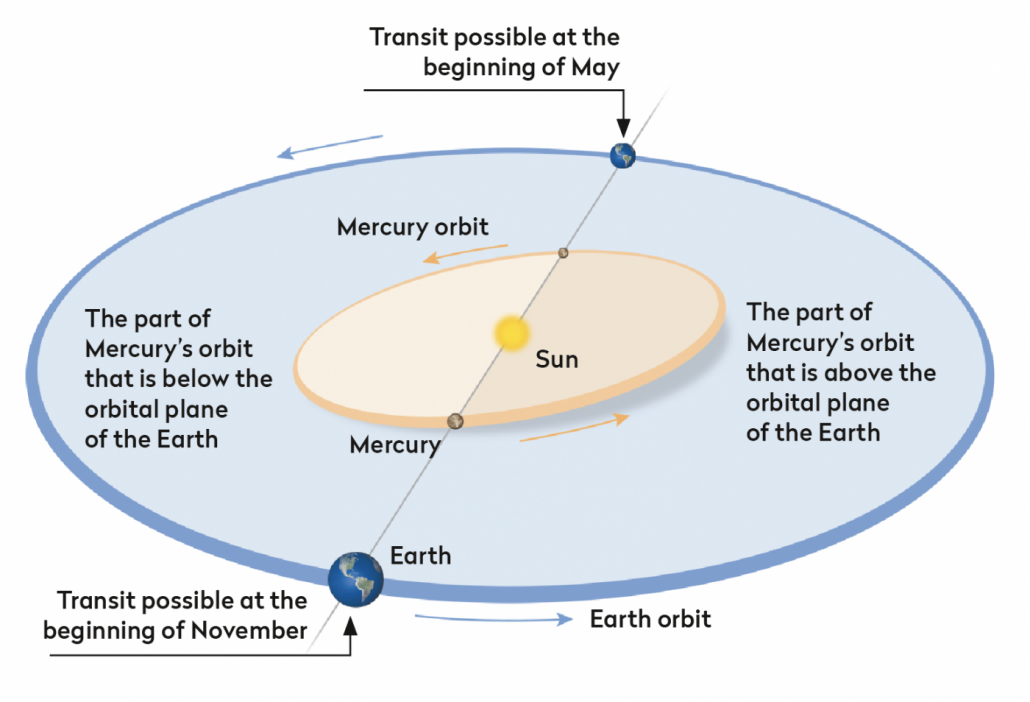Where to view the transit of Mercury on Monday?
The South African Agency for Science and Technology Advancement is joining other organisations to enable South African citizens to witness the transit of Mercury on Monday, 11 November 2019 from 15:30 to 18:00 at the Johannesburg Observatory.
On the afternoon of 11 November, the position of planet Mercury will be directly between the Sun and Earth. Observers all over Africa will be able to see a tiny black dot making its way across the solar disk. The last time Mercury transited the Sun was in May 2016 and it will not happen for another 13 years.
The South African Agency for Science and Technology Advancement, Science Communications Manager Mr Michael Ellis, says it does not happen every day. “In fact, it will only happen again in 2032. So get ready to view the planet Mercury as it transits across the Sun – passing directly between the Sun and the Earth. It’s almost like a bird or an aeroplane flying across the sky and directly between you and the Sun, it’s only that Mercury is much further away.”
He added that “scientists are excited about the transit of Mercury because there are various experiments they can do and observations they can make as Mercury makes its journey across the path of the Sun. Previously, scientists have made some interesting observations about the atmospheric composition of planets as the Sun’s light shines brightly through their atmosphere. Scientists have also made observations of the long term changes in the size of the Sun, by measuring what is known as the solar radius.”
As Mercury and Venus lie within the orbit of the Earth, they sometimes come exactly between the earth and the Sun, and can be seen crossing the face of the Sun for the duration of a few hours. These planets are much farther away from the earth than the Moon, and appear to be smaller in the sky than the Moon.

According to a statement by the African Astronomical Society (AfAS) the transit will be visible across the African continent and may be observed by projecting the image of the Sun through a small telescope. However, South Africans will be able to watch Mercury transit the Sun on Monday, 11 November at 14:35 Central Africa Time (CAT).

According to SAAO the transit will take the planet 5.5 hours to move completely across the disc of the Sun, starting at 14:35 (2:35 pm). The Sun will have already started to set by the time Mercury reaches the mid-point of its transit, depending on your location. (Sunset in Johannesburg will be at 18:31 (6:31 pm) and Cape Town at 19:23 (7:23 pm).
The last four transits occurred on November 15, 1999; May 7, 2003; November 8, 2006; and May 9, 2016. People with access to telescopes are encouraged to take the opportunity to view this rare event.
Do’s
It is safe to look at the projected image, observers can project the image of the Sun onto a piece of paper. This method also makes it possible to show the transit to many people simultaneously.
Don’ts
- Do not look directly at the Sun without a proper solar viewer.
- Do not use sunglasses or tinted shades to look at the Sun.
- Do not use solar eclipse viewers with binoculars or telescopes as the lenses act like magnifying glasses, amplifying the sunlight and making the eclipse viewers ineffective.
Viewing sites
Organisations | Venue | City, town or village | Province | Time of sunset | Number of telescope |
Southern Cape Astronomy | Southern Cape Astronomy Club | Pearly Beach | Western Cape | 19:20 | 2 |
Cape Centre of the Astronomical Society of South Africa | Eden on the Bay Mall – Big Bay – Blouberg | Cape Town | Western Cape | 19:30 | 5 |
UNISA Science Engagement Centre | UNISA Observatory | Pretoria | Gauteng | 18:30 | 1 |
Senekal Astronomy Club | Resident 20 Boerbok Street | Senekal | Freestate | 18:36 | |
South African Astronomical Observatory | SAAO Auditorium, 1 Observatory Road, Observatory, | Cape Town | Western Cape | 19:23 | 2 |
Department of Science and Innovation | CSIR Campus meiring naude road, DSI Building (Building No. 53) | Pretoria | Gauteng | 18:31 | 1 |
Transit of Mercury : Public Observation in Site C | Site C Taxi Rank | Khayelitsha , Cape Town | Western Cape | 19h20 | 2 |
South African Agency for Science and Technology Advancement | Observatory in Johannesburg | Johannesburg | Gauteng | from 15:30 to 18:00 |
If you are unable to visit a viewing site, some alternative means to view the transit include:
- Using the correct solar filter on your telescope or a specially designed solar telescope.
- Watching it online! Some astronomical organisations will be live steaming the event, so you will be able to see it there.
- Setting up your binoculars or telescope on a tripod. Aligning the telescope by using its shadow on the ground and then holding a piece of white paper about 30 centimetres from the eyepiece. You should see a projected image of the Sun on the paper.
For more information click on the link https://transit2019.saao.ac.za

 The South Africa Agency for Science and Technology Advancement (SAASTA) is a business unit of the
The South Africa Agency for Science and Technology Advancement (SAASTA) is a business unit of the 
